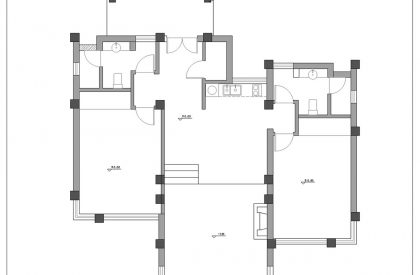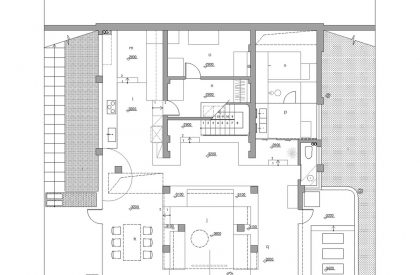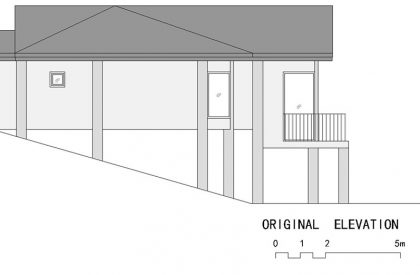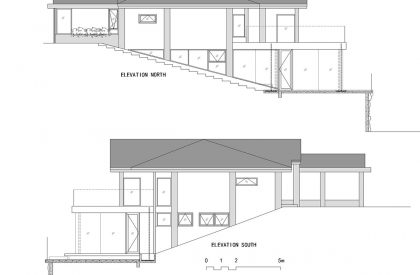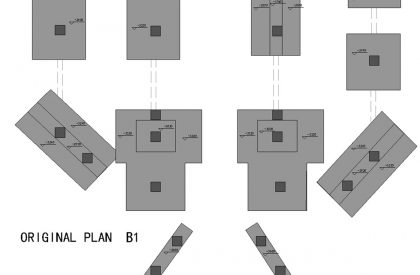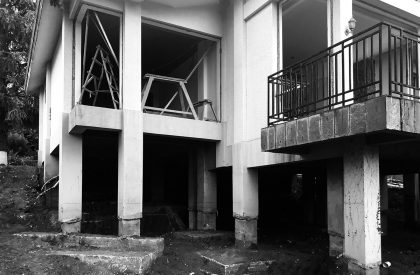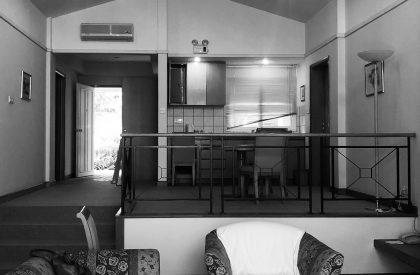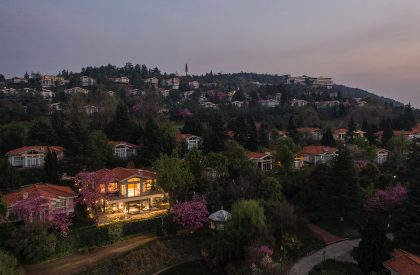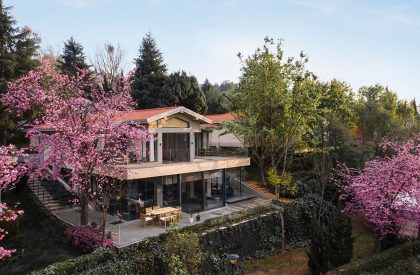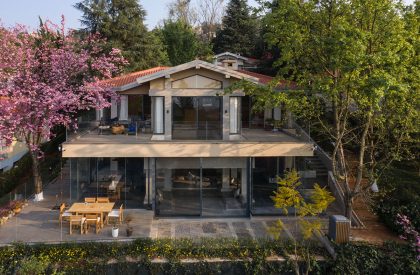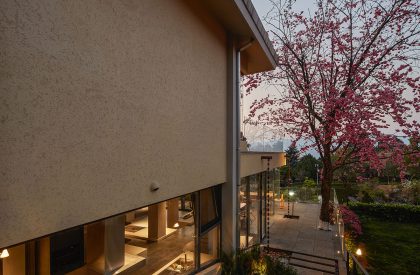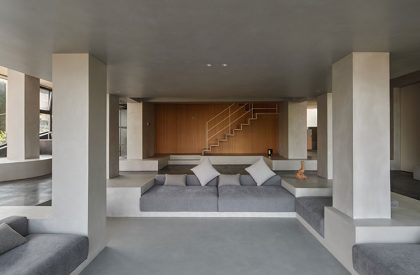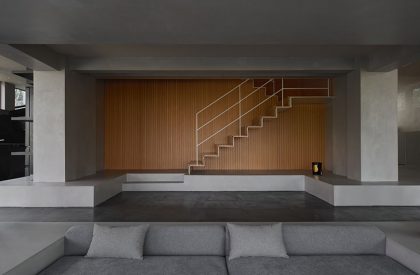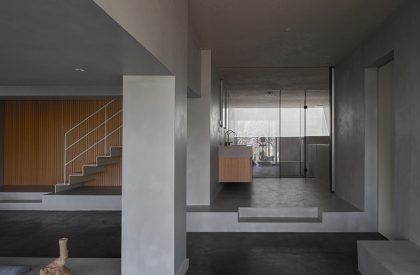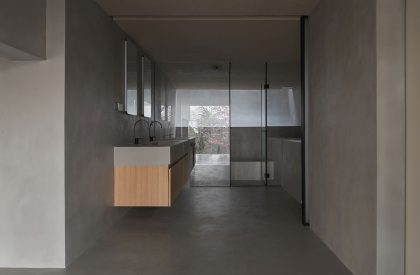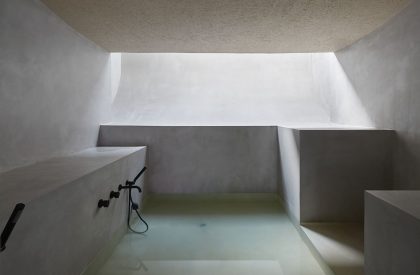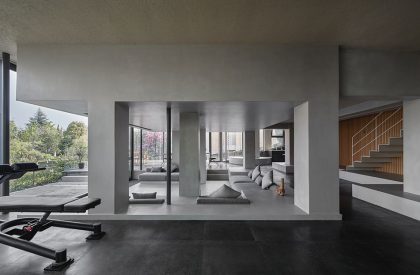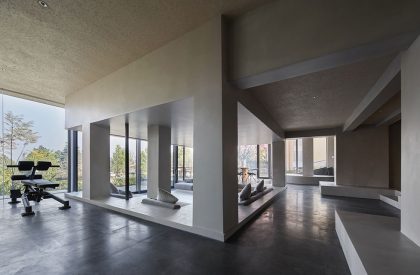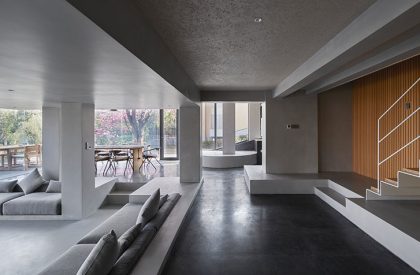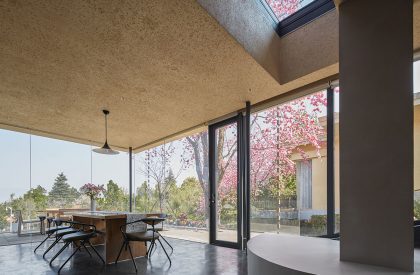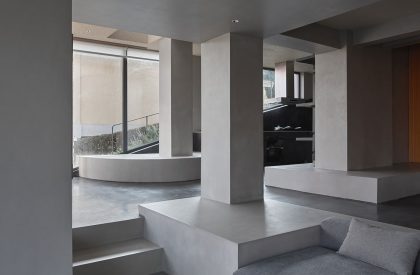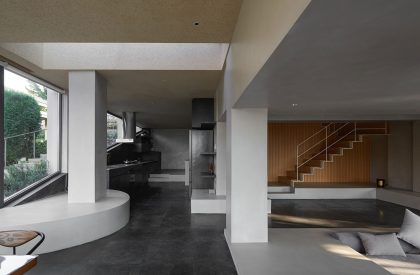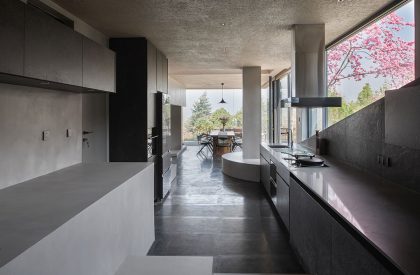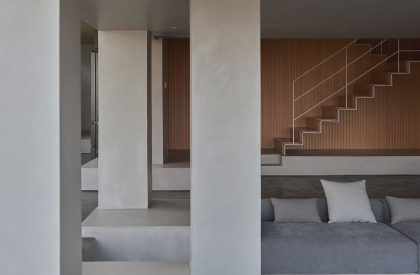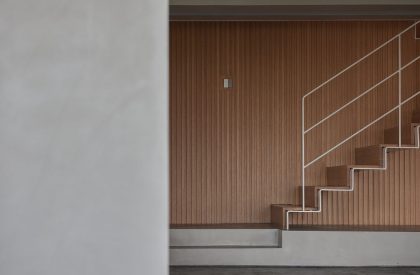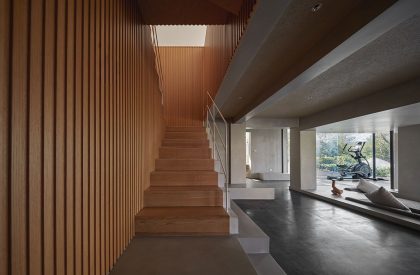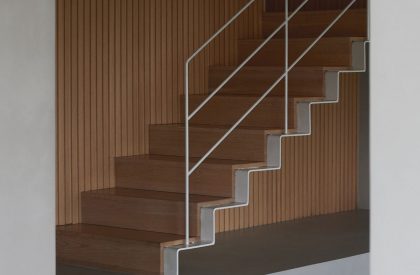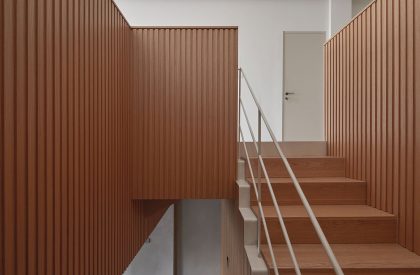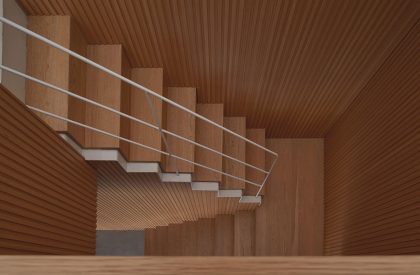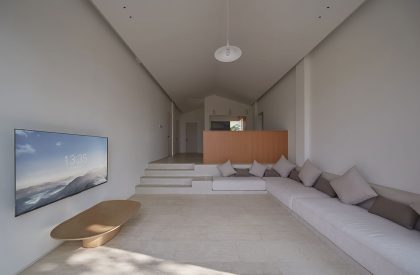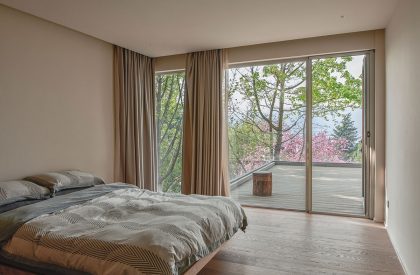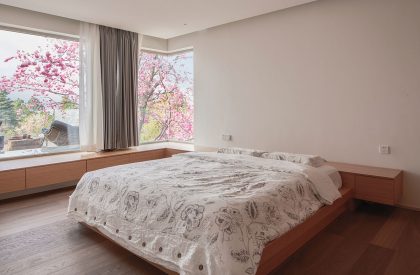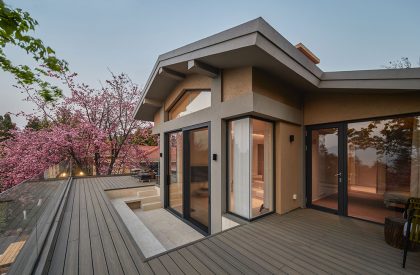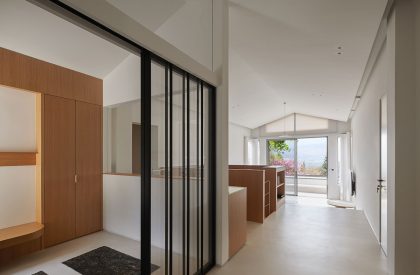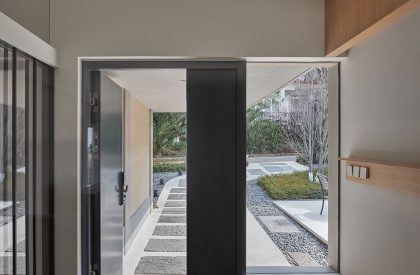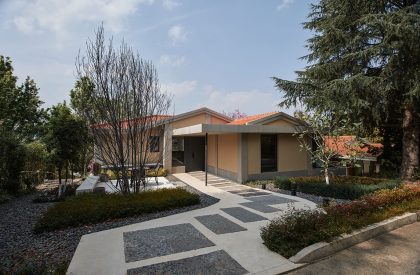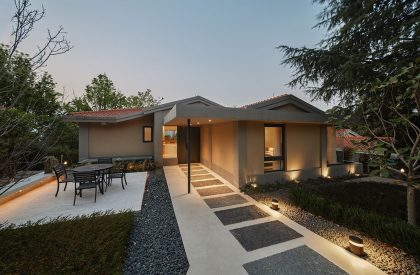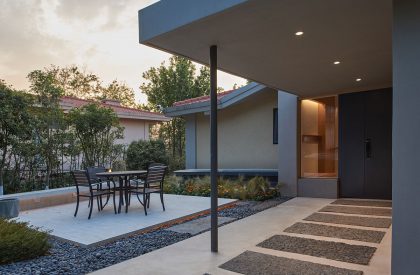Excerpt: In the House Rooted in the Soil designed by KiKi ARCHi, after much research and investigation, the design team proposed to let the home extend into the soil using the characteristics of the original foundation and slope of the site to convert the single-storey structure into a two-storey structure while retaining the original foundations.
Project Description

[Text as submitted by architect] Kunming, Yunnan Province, is a livable city with a comfortable climate and natural ecology, which attracts many sojourners to settle down. The site for the mid-hill residence was located in Kunming’s famous golf resort. The client is a golf enthusiast, and the house provides a rest space and takes care of the needs of all family members and enjoys the vistas and closeness to nature. The old single-story building was converted into a double-story holiday house that stands halfway up the hill, surrounded by green forests and cherry trees.


The soil has its own temperature and due to soil’s adhesion, the rammed earth house is warm in the winter and cooler in the summer. Grain is produced in the autumn by crops that establish themselves in warm soil. Long, mellow brewing can occur in a wine container locked inside a mud cellar. People’s reliance on and understanding of soil has resulted in a wealth of life experience, which also served as the inspiration for the design.


After much research and investigation, the design team proposed to let the home extend into the soil using the characteristics of the original foundation and slope of the site to convert the single-storey structure into a two-storey structure while retaining the original foundations. The client was quite surprised by this design because it increased the area and added functional and aesthetic values.



The foundation columns were where the alteration of the area began. The design team examined more than 10 exposed columns, including their position, height, stability, etc., to establish the layout of the new lower level. With the aid of the original slope, this new floor was finally set within a height range of 3.6 to 2.9 meters. The kitchen, bathroom, and storage room are in the back with a little lower height, while the dining, leisure, and workout spaces are in the front with the best views. As the building’s exterior, the glass lets in a lot of light. The support issue is resolved and a structural foundation for the terrace that extends from the top floor is provided by the addition of circular steel columns.

From the external wall to the interior, the diatom mud’s moisture-proof and absorption capabilities are demonstrated, showcasing the beauty of the solid texture along with the delicate micro-cement. As a result, the once-muddy slope was transformed into a ‘glass box’ that was alive with people and breathing in the grass and trees.

The interior design conveys the exploration desire, mystery, and originality of going “deep into the earth,” while the building structure offers the underground floor a free and flexible appearance. Because of the smart use of original columns and ground height, the seats in the recreation area were naturally shaped, evoking the malleability of soil. The kitchen’s narrow side windows and the bathroom’s arcs of light from the hot spring pool create a cavernous atmosphere. The immersed restful room creates a very different contrast to the first level depending on whether it is bright or dark.


The warm wooden area is a staircase hall leading to the first floor, with an exposed white steel structure and slim handrail that create a beautiful visual line. Through upward, as into a wrapped ‘wooden box’, along the direction of light to find the exit, that is, into the small living room on the first floor.


Here, the color temperature of the space begins to change, and everything is bright and warm. The entrance, water bar, sunken living room, and terrace are arranged on an axis, with three private bedrooms on either side. Local volcanic stone bricks extend from the outdoor path to the entrance, weakening the boundary between the interior and exterior. An inner window on the wall of the water bar connects the scenery of the front courtyard and backyard. The low wall of the staircase hall, with shelving, is both decorative and functional. All these Impressive details make the house more interesting.

With the completion of the renovation, the outdoor space has been increased three times. Courtyard walkways, terraces, small gardens, and diversified plants surround the house, creating more opportunities for enjoying nature and forming multiple entry routes.

The carefully laid pebbles, slates, and outdoor preservative wood floors create a different feeling of staying in each area through the material, and the specially designed drainage device will form a small hanging waterfall on rainy days. Plants take root downward for better upward growth; like this house, it goes deep into the soil and nourishes a better future life with a rich inner temperature of kinship.


